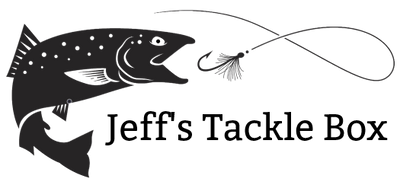
For its size, nothing has the fishing fighting power of an Emmrod. They are capable of out fighting game fish that would destroy most fishing poles. Their  casting distance and accuracy is also superb. But the casting stroke of Emmrods is different than the more common, longer, tubular style rods that dominate the marketplace. Oddly enough, kids and folks who have never fished before have little problem picking up an Emmrod and casting just fine. It’s the experienced anglers that need a little practice.
casting distance and accuracy is also superb. But the casting stroke of Emmrods is different than the more common, longer, tubular style rods that dominate the marketplace. Oddly enough, kids and folks who have never fished before have little problem picking up an Emmrod and casting just fine. It’s the experienced anglers that need a little practice.
The motion in the cast is loaded throughout the longer blank of a tubular rod. If the same casting motion and power is directed into an Emmrod, in some cases, the reel will engage during the cast. What normally happens, is the bail on the spinning reel snaps over or the bait casting reel engages into the retrieve mode. At this moment you have only a few feet of line out, so either the bait snaps off and flies off into the sky or it whips back, still connected, toward the angler. In either case, it’s a dangerous or embarrassing situation. This same thing occurs when an angler is trying to power cast for distance with a regular rod, without proper practice. Too much happens too fast and the reels engage. Having a reel engage at the wrong time is usually a casting technique issue, rather than a reel issue. On those rare occasions that the reel is the culprit, it should be repaired or replaced. Proper handling of the reel is important. For spinning reels, closing the bail by hand, rather than snapping it over with the reel handle, greatly reduces wear and tear on the engagement mechanisms. For bait casting reels, a thumb on the spool to stop the lure, rather than a snappy turn of the handle, offers similar protection.
 Emmrods need a different, more controlled, casting motion. Since there is so much power in the stainless rod, it needs to be used to launch the lure toward its target. Slower casting strokes work better with the Emmrod. The best suggestion is training using a practice plug. These are small rubber or plastic, weighted, hookless plugs designed for use on land. For spinning outfits the 1/4oz size is ideal; for bait casting use 3/8 or 1/2oz. Start slowly, tossing the plug toward a pre-selected target. As accuracy and control increase, distance can be added. The Emmrod needs to load or flex properly to cast the lure. A slower, controlled, casting stroke is required to get the maximum power from the rod. Once mastered, the Emmrod will cast with all the distance and accuracy needed for virtually any angling situation.
Emmrods need a different, more controlled, casting motion. Since there is so much power in the stainless rod, it needs to be used to launch the lure toward its target. Slower casting strokes work better with the Emmrod. The best suggestion is training using a practice plug. These are small rubber or plastic, weighted, hookless plugs designed for use on land. For spinning outfits the 1/4oz size is ideal; for bait casting use 3/8 or 1/2oz. Start slowly, tossing the plug toward a pre-selected target. As accuracy and control increase, distance can be added. The Emmrod needs to load or flex properly to cast the lure. A slower, controlled, casting stroke is required to get the maximum power from the rod. Once mastered, the Emmrod will cast with all the distance and accuracy needed for virtually any angling situation.

